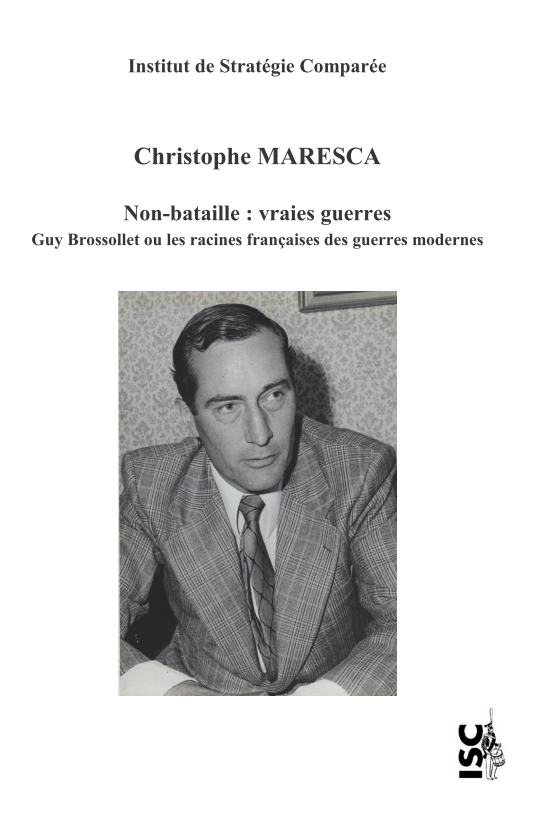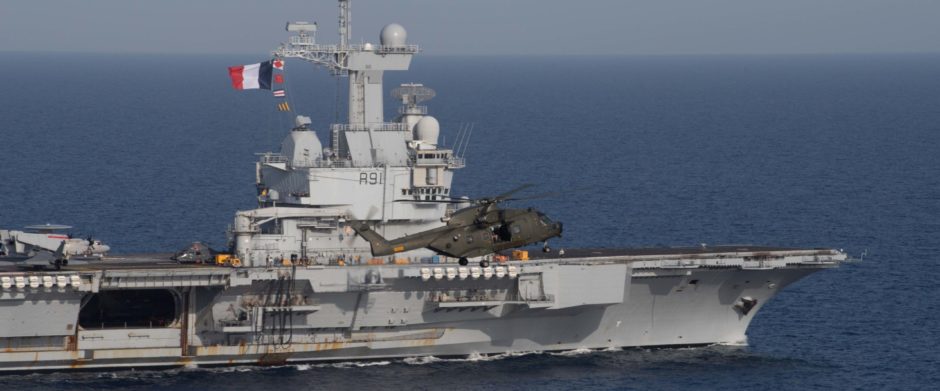- Ardant du Picq Charles (colonel), Études sur le combat. Combat antique et combat moderne, Paris, Champ libre, 1978.
- Audouin-Rouzeau Stéphane, Une anthropologie historique de la guerre moderne (xixe-xxie siècle), Paris, Seuil, 2007.
- “La bataille d’hier à aujourd’hui”, Revue internationale d’histoire militaire, 78, 2000 (numéro français).
- Barno David et Nora Bensahel, Adaptation under Fire. How Militaries Change in Wartime, Oxford, Oxford University Press, 2020.
- Baudry Ambroise (lieutenant de vaisseau), La Bataille navale. étude sur les facteurs tactiques, Paris, Berger-Levrault, 1912.
- Bellamy Christopher, The Evolution of Modern Land Warfare, Theory and Practice, Routledge, London, 2017.
- Biddle Stephen, Military Power. Explaining Victory and Defeat in Modern Battle, Princeton University Press, Princeton, 2004.
- Bonnal H. (général), L’Art nouveau en tactique, Paris, Chapelot, 1904.
- Bonnefoy François, Les Armes de guerre portatives en France du début du règne de Louis XIV à la veille de la Révolution (1660-1789), Paris, Librairie de l’Inde, 1991.
- Brodie Bernard et Brodie Fawn M., From Crossbow to H Bomb, Bloomington, Indiana University Press, 2e éd. 1973.
- Brown Ian T., A New Conception of War. John Boyd, the US Marines and Maneuver Warfare, Marine Corp University Press, Quantico, 2018.
- Cambell Peter, Military Realism: The Logic and Limits of Force and Innovation in the U.S. Army, Columbia, University Press of Missouri, 2019.
- CEHD, Nouvelle Histoire Bataille, Vincennes, Cahiers du CEHD I Cahier n° 9, 1999 ; II Cahier n° 23, 2004.
- Citino Robert M., Quest for Decisive Victory. From Stalemate to Blitzkrieg in Europe, 1899-1940, Lawrence, Kansas University Press, 2002.
- Citino Robert M., Blitzkrieg to Desert Storm. The Evolution of Operational Warfare, Lawrence, Kansas University Press, 2004.
- Clarke Robert M. et William L. Mitchell, Deception: Counterdeception and Counterintelligence, CQ Press, 2018,
- Commission internationale d’histoire militaire, “La tactique au xviiie siècle”, Acta n° 13, Helsinki, 1988.
- “Conséquences tactiques et stratégiques des techniques”, Revue internationale d’histoire militaire, 41, 1979 (numéro français).
- Danet Didier, Hanon Jean-Paul et de Boisboissel Gérard (dir), La guerre robotisée, Coll. « Guerres et opinions », Economica, Paris, 2012.
- Daudignac (général), Les Réalités du combat, Paris, Lavauzelle, s.d. (vers 1905).
- de Courrèges Hervé, Givre Pierre-Joseph et Le Nen Nicolas, Guerre en montagne. Renouveau tactique, Coll. « Stratégies et doctrines », Economica, Paris, 2006.
- Drévillon Hervé, Scènes de guerre de la Table Ronde aux Tranchées, Paris, Seuil, 2007.
- Ducheine Paul A.L., Schmitt, Michael N., Osinga, Frans P.B. (Eds.), Targeting: The Challenges of Modern Warfare, Springer, Londres, 2016.
- Duffour (colonel), Le Problème de la réunion des forces ou de la concentration, Paris, Centre des Hautes Études militaires, 1923.
- Dupuy Trevor N. (colonel), Numbers, Predictions and War : Using History to Evaluate Combat Factors and Predict the Outcome of Battles, Indianapolis, Bobbs-Merrill, 1979.
- Dupuy Trevor N. (colonel), Understanding War. History and Theory of Combat, New York, Paragon, 1987.
- Dyson Tom, Organisational Learning and the Modern Army. A New Model for Lessons-Learned Processes, Routledge, Londres, 2019.
- El-Shazly Saad (général), The Crossing of Suez. The October War (1973), Londres, Third World Centre for Research and Publishing, 1980 (importante réflexion tactique).
- Farrell Theo, Osinga Frans and Russell James A. (eds.), Military Adaptation in Afghanistan, Stanford University Press, Stanford, 2013.
- Finkel, Meir, On Flexibility: Recovery from Technological and Doctrinal Surprise on the Battlefield, Stanford University Press, Stanford, 2011.
- Forray Gilbert, Les débarquements en Angleterre. De César à Hitler, Coll. « Campagnes et stratégies », Economica, Paris, 2010.
- Fort Olivier, L’artillerie des stratagèmes, Economica, Paris, 2016.
- Francart Loup (colonel), “Place du niveau opératif dans la réflexion militaire actuelle”, Objectif 21. Revue du Commandement de la doctrine et de l’entraînement de l’armée de Terre, 2, 1er trimestre 1996.
- Frick (colonel-divisionnaire), Bréviaire tactique, Lausanne, Payot, 1944.
- Friedman B.A., On Tactics. A Theory of Victory in Battle, Annapolis, Naval Institute Press, 2017.
- Fuller John F. Charles, La conduite de la guerre. Etude des répercussions de la révolution française, de la révolution industrielle et de la révolution russe sur la conduite de la guerre, Coll. « Petite Bibliothèque Payot », Payot, 2007.
- Fuller John F. Charles, La préparation du soldat à la guerre (traduction et présentation par Olivier Entraygues), Brèches Editions, 2013.
- Gagnon Richard (dir.) Penser la guerre au futur, Presses de l’Université Laval, Québec, 2016.
- Goya Michel, La Chair et l’acier. L’invention de la guerre moderne 1914-1918, Paris, Tallandier, 2004.
- Goya Michel, Sous le feu. La mort comme hypothèse de travail, Tallandier, Paris, 2014.
- Goya Michel, S’adapter pour vaincre, Perrin, Paris, 2019.
- Grandmaison (colonel de), Deux conférences. La notion de sûreté et l’engagement des grandes unités, Paris-Nancy, Berger-Levrault, 1911.
- “Grandson, 1476. Essai d’approche pluridisciplinaire d’une action militaire du xve siècle”, Revue internationale d’histoire militaire, 40, 1978.
- Griffith Paddy, Battle Tactics of the Western Front, Londres-New Haven, Yale University Press, 1994.
- Grossman Dave, On Combat. The Psychology and Physiology of Deadly Conflict in War and in Peace, Back Bay Books, 3e ed., 2008.
- Guttieri Karen, Melanne Civic et Volker Franck Understanding Complex Military Operations. A case study approach, Routledge, Londres, 2020.
- Haberay Gilles et Perot Hugues, L’art de conduire une bataille, Pierre de Taillac Éditions, Paris, 2016.
- Hanska Jan, War of Time. Managing Time and Temporality in Operational Art, Springer, Londres, 2020.
- Harrison Richard W., The Russian Way of War. Operational Art 1904-1940, Lawrence, University Press of Kansas, 2001.
- Haug Karl-Eric et Maao Ole Jorgen (eds.), Conceptualising Modern War, Columbia University Press, New-York, 2011.
- Henrotin Joseph, Techno-guérilla à la guerre hybride. Le pire des deux mondes, Coll. « La pensée Stratégique », Nuvis Paris, 2014.
- Henrotin Joseph, L’art de la guerre à l’âge des réseaux, Coll. « Technologies intellectives », ISTE, Londres, 2017.
- Hoiback Harald, Understanding Military Doctrine. A Multidisciplinary Approach, Coll. « Cass Military Studies », Routledge, London, 2013.
- Holden Reid Brian, Military Power : Land Warfare in Theory and Practice, Londres-Portland, Frank Cass, 1997.
- Holmes Richard and Martin Marix Evans (Eds.), A Guide to Battles. Decisive Conflicts in History, Oxford, Oxford University Press, 2018.
- Hooker Richard D. et Galvin John R. (général), Maneuver Warfare : An Anthology, Novato, Presidio Press, 1993.
- Horward Donald D. et Michael V. Leggiere (Eds.), Napoléon and the Operational Art of War: Essays in Honor of Donald D. Horward, Leiden, Brill, 2016
- House Jonathan M., Combined Arms Warfare in the Twentieth Century, Lawrence, Kansas University Press, 2001.
- Huber Thomas M. (dir.), Compound warfare: That Fatal Knot, Combat Studies Institute, Command and General Staff College, Fort Leavenworth, September 2002.
- Hubin Guy, Perspectives tactiques, Paris, ISC-Économica, Bibliothèque stratégique, 3e éd. 2008.
- Hughes B.P. (major-général), La Puissance de feu. l’efficacité des armes sur le champ de bataille de 1630 à 1850, Lausanne, Edita-Vilo, 1976.
- Hughes Jr Wayne P., Fleet Tactics. Theory and Practice, Annapolis, Naval Institute Press, 1986 ; 2e éd.
- Jeffrey’s George, Tactics and Grand Tactics of the Napoleonic Wars, Brockton, The Courier Publishing, 1982.
- Keegan John, Anatomie de la bataille, Paris, Robert Laffont, 1993.
- Kellett A., Combat Motivation. The Behavior of Soldiers in Battle, Boston, Kluwer-Nijhoff, 1982.
- Kennedy Caroline, Suspects Devic es. How IEDs Killed the Western Way of War, Hurst Londres, 2014.
- King Anthony, Frontline: Combat and Cohesion in Twenty-First Century, Oxford, Oxford University Press, 2011.
- King Anthony, The Transformation of Europe’s Armed Forces: From The Rhine To Afghanistan, Cambridge, Cambridge University Press, 2015.
- King Anthony, The Combat Soldier: Infantry Tactics and Cohesion in the Twentieth and Twenty-First Centuries, Oxford, Oxford University Press, 2019.
- Knox MacGregor et Murray Williamson (eds.), The Dynamics of Military Revolution, 1300–2050, University Press, Cambridge, 2001.
- Krieg Andreas et Rickli Jean-Marc, Surrogate Warfare. The Trandformation of War in the 21st Century, Georgetown University Press, Washington, 2019.
- Lauerma Matti, L’Artillerie de campagne française pendant les guerres de la Révolution. Évolution de l’organisation et de la tactique, Helsinki, Keskuskirjapaino, 1956 (une étude modèle).
- Lawrence Christopher A., War by Numbers: Understanding Conventional Combat, University of Nebraska Press, 2017.
- Leonhard Robert, The Art of Manoeuver. Manoeuver-Warfare Theory and Airland Battle, Novato, Presidio Press, 1991.
- Lewal (colonel, puis général), Études de guerre. Partie organique, Paris, Librairie militaire Dumaine, 1873 ; Tactique de mobilisation, tactique de combat, 1875 ; Tactique de marche, 1876 ; Tactique de stationnement, 1879 ; Introduction à la tactique positive, 1878 ; Tactique des ravitaillements, 2 vol., 1889-1890.
- Lindsay John R., Information Technology and Military Power, Cornell University Press, Ithaca, 2020.
- Lynn John A., The Bayonets of the Republic : Motivation and Tactics in the Army of Revolutionary France 1791-1794, Urbana, University of Illinois Press, 1984.
- Lynn John A., A History of Combat and Culture, Boulder-Oxford, Westview, 2003.
- Malis Christian (dir.), Guerre et manœuvre, Paris, Économica, Stratégies et doctrines, 2009.
- Matheny Michael R., Carrying the War to the Enemy: American Operational Art to 1945, The University of Oklahoma Press, Norman, 2011.
- McKercher B.J.C. et Hennessy Michael A., The Operational Art : Developments in the Theories of War, Westport, Praeger, 1996.
- Meckel J., Les Éléments de la tactique, Paris, Louis Westhausser, 1887.
- Militärgeschichtliches Forschungsamt (ed.), Operational Thinking in Clausewitz, Moltke, Schlieffen and manstein, Bonn, Mittler, 1988.
- Millett Allan R. et Murray Williamson (eds.), Military Effectiveness, 3 vols., Reed, Cambridge University Press, Cambridge, 2010.
- Montaigne (lieutenant-colonel), Études sur la guerre, Paris-Nancy, Berger-Levrault, 1911.
- Naulet Frédéric, L’Artillerie française 1665-1765, Paris, ISC-CFHM-Économica, Hautes Études militaires 21, 2002.
- Naveh Shimon, In Pursuit of Military Excellence. The Evolution of Operational Theory, Londres-Portland, Frank Cass, 1997.
- Nolan, Cathal J., The Allure of Battle. A History of How Wars Have Been Won and Lost, Oxford University Press, Oxford, 2017.
- Nosworthy Brent, The Anatomy of Victory. Battle Tactics 1689-1763, New York, Hippocrene Books, 1990.
- Nosworthy Brent, Battle Tactics of Napoléon and His Ennemies, Londres, Constable, 1995.
- O’Hanlon Michael, The Future of Land Warfare, Brookings Institution, Washington, 2015.
- O’Sullivan Carmel, Killing on Command. The Defence of Superior Orders in Modern Combat, Palgrave MacMillan, Londres, 2016.
- Olsen John Andreas et Van Creveld Martin (ed.), The Evolution of Operational Art: From Napoleon to the Present, Oxford University Press, Oxford, 2010.
- Percin (général), Le Combat, Paris, Félix Alcan, 1914.
- Peter Mathieu et Terrier Julien, Les opérations militaires en essaims – combattre autrement, Paris, Economica, 2019.
- Philipp lieutenant-colonel de, Le Service d’état-major pendant les guerres du Premier Empire, Paris, Editions historiques Teissèdre, 2002 (original 1900).
- Picard Ernest et Jouan Louis, L’artillerie française au xviiie siècle, Paris, Berger-Levrault, 1906.
- Pollack Kenneth M., Armies of Sand. The Past, Present, and Future of Arab Military Effectiveness, Oxford, Oxford University Press, 2019.
- Raska Michael, Military Innovation in Small States. Creating a Reverse Asymmetry, Routledge, London, 2015.
- Razoux Pierre, La Guerre du Kippour d’octobre 1973, Paris, Économica, Campagnes et stratégies, 1999.
- Razoux Pierre, La guerre des six jours (5-10 juin 1967). Du mythe à la réalité, Paris, Economica, 2004.
- Reichel Daniel, Le choc, Berne, Armée suisse, Service historique, 1984.
- Reichel Daniel, Le Feu, Berne, Armée suisse, Service historique, 3 fascicules, 1982-1983.
- Reichel Daniel, La Manœuvre et l’incertitude, Berne, Armée suisse, Service historique, 1986.
- Reiter Dan (Ed.), The Sword’s Other Edge: Trade-Offs in the Pursuit of Military Effectiveness, Cambridge, Cambridge University Press, 2017.
- Rodman David, Combined Arms Warfare in Israeli Military History: From the War of Independence to Operation Protective Edge, Sussex Academic Press, Brighton, 2019.
- Romaniuk Scott N., Grice Francis, The Future of US Warfare, Routledge, London, 2017.
- Rosen Stephen P., « New Ways of War: Understanding Military Innovation », International Security, Vol. 13, n°1, Summer 1988.
- Royal Benoît (dir), L’artillerie dans les guerres de contre-insurrection, Coll. « Guerres et opinions », Economica, Paris, 2015.
- Schellendorff Bronsart von, Le service d’état-major, paris, Librairie militaire Dumaine, 1876.
- Searle Alaric, Armoured Warfare: A Military, Political and Global History, Bloomsbury, 2017.
- Selected German Army Operations on the Eastern Front, 5 vol. + 1 vol. de cartes, Carlisle Barracks, US Army War College, 1983.
- Serena Chad, A Revolution in Military Adaptation: The S. Army in the Iraq War, Georgetown University Press, Washington, 2011.
- Seymour William, Decisive Factors in Twenty Great Battles of the World, Londres, Sidwick & Jackson, 1988.
- Shils Edward A. et Janowitz Morris, “Cohesion and Disintegration of the Wehrmacht in World War II”, Public Opinion Quarterly, 12, 1948.
- Shimko Keith L., The Iraq Wars and America’s Military Revolution, University Press, Cambridge, 2010.
- Shurkin Michael, France’s War in Mali. Lessons for and Expeditionary Army, Rand Corporation, Santa Monica, 2014.
- Spiller Roger J. (ed.), Combined Arms in Battle Since 1939, Fort Leavenworth, S. Army Command & General Staff College Press, 1992.
- Steiger Rudolf, Armour Tactics in the Second World War. Panzer Army Campaigns of 1939-1941 in German War Diaries, Oxford-Providence, Berg, Studies in Military History 1, 1991.
- Studies on Soviet Combat Performance, Carlisle Barracks, US Army War College, 1983.
- Swain Richard M., « Lucky War ». Third Army in Desert Storm, Fort Leavenworth, US Army Command & General Staff College Press, 1997.
- Taaffe Stephen R., MacArthur’s Jungle War. The 1944 New Guinea Campaign, Lawrence, Kansas University Press, 1998.
- Tangredi Sam, Anti-Access Warfare. Countering A2/AD Strategies, Naval Institute Press, Annapolis, 2013.
- Telp Claus, The Evolution of Operationnal Art 1740-1813. From Frederick the Great to Napoleon, Frank Cass, London, 2005.
- Ternay (colonel marquis de), Traité de tactique, Paris, Anselin, 1832.
- Triandafillov V.K., The Nature of the Operations of Modern Armies, édité par Jacob W. Kipp, Londres, Frank Cass, 1994.
- US Naval War College, Sound Military Decision, Annapolis, Naval Institute Press, Classics of Sea Power, 1992 (manuel rédigé en 1936 et refondu en 1942).
- Van Creveld Martin, Fighting Power. German and US Army Performance 1939-1945, Londres-Melbourne, Arms & Armour Press, 1983.
- Vego Milan, Joint Operational Warfare: Theory and Practice, US Naval War College, Newport, 2007.
- Verdy du Vernois Julius von, L’Art de conduire les troupes, Bruxelles-Paris, Muquardt-Dumaine, 2e éd. 1875.
- George S. Webb, The Razor’s Edge: Identifying the Operational Culminating Point of Victory, Student Paper, US Naval War College, 1995.
- Yakovleff Michel, Tactique théorique, Paris, Économica, Stratégies et doctrines, 2006 ; 2e éd. 2009.
-
Défense et illustration de l'enseignement de la stratégie
-
* * *
-
Les chercheurs de l'ISC
-
* * *
-
Nos dernières publications
-
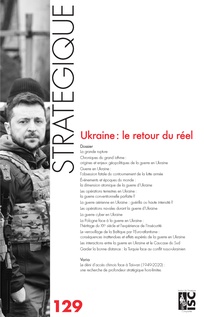
-
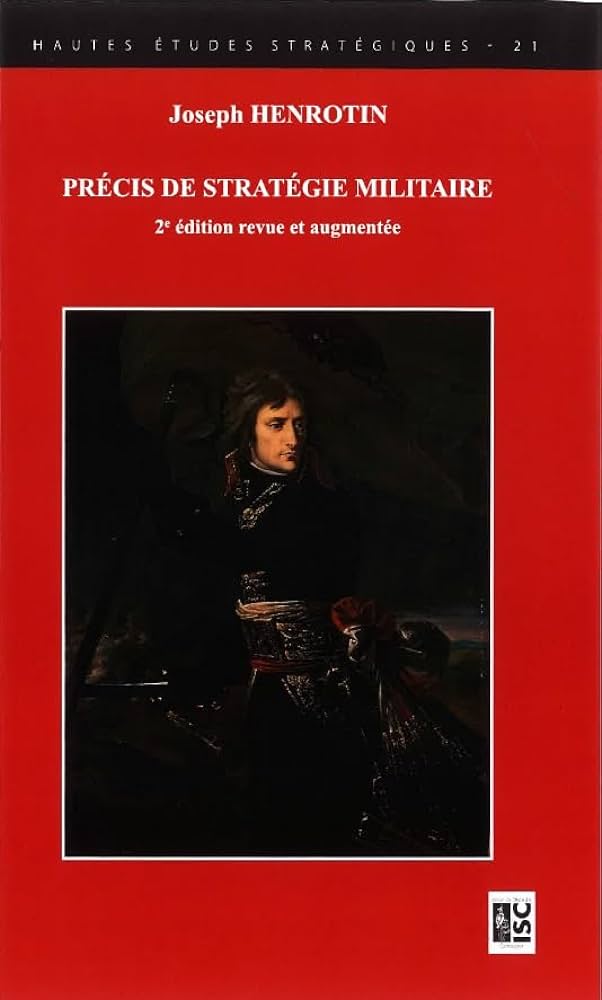
-
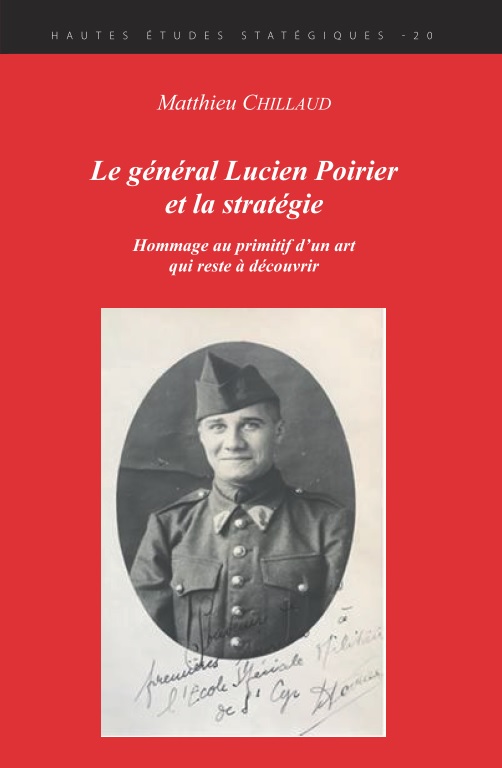
-
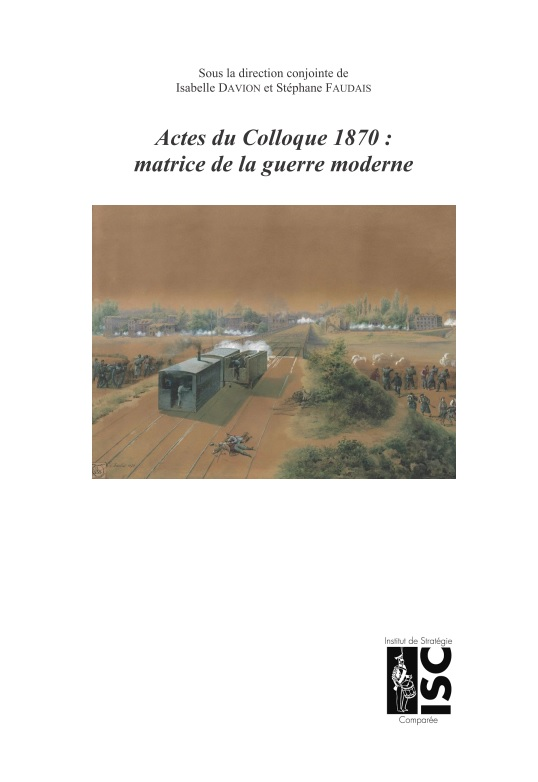
-
